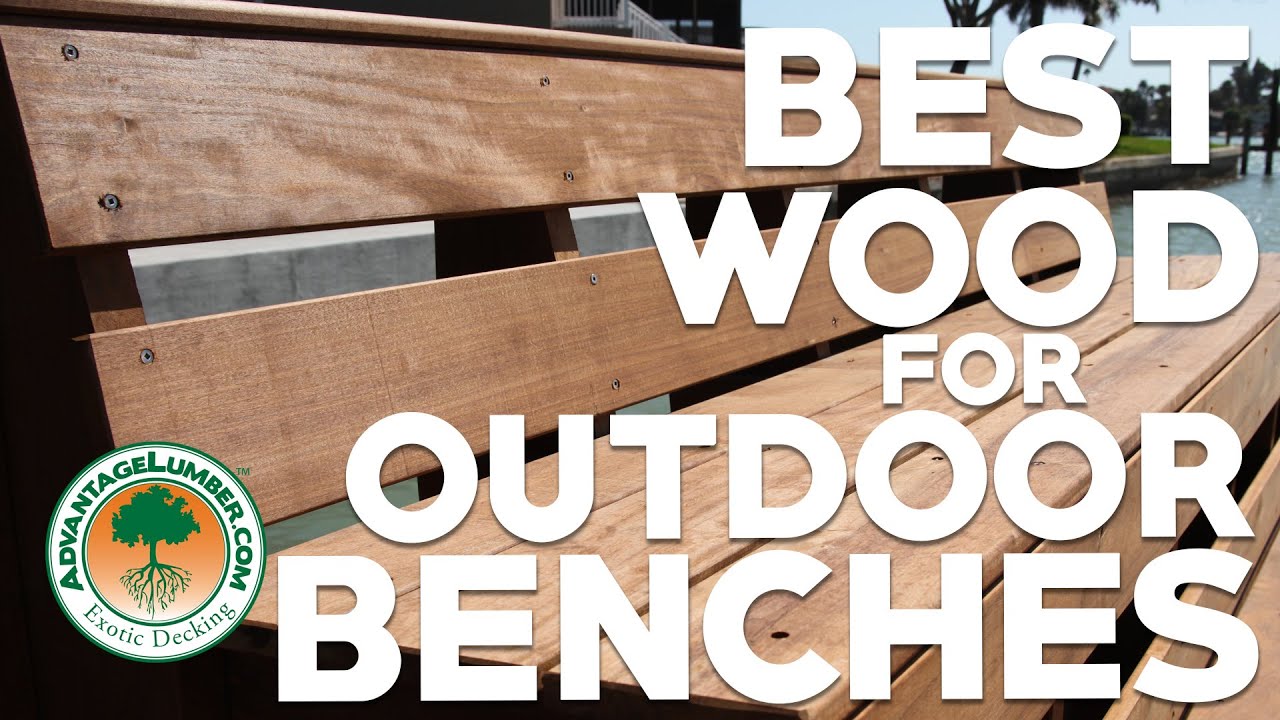Building a Wood Bench: The Importance of Choosing the Right Wood
When it comes to building a wood bench, there are a lot of factors to consider. What size should it be? How many people should it accommodate? What style is best suited for your space? But perhaps the most important decision you’ll make when building a wood bench is what type of wood to use.
The type of wood you choose can have a significant impact on the bench’s durability, maintenance, and appearance. And with so many options available, it can be hard to know where to begin. In this article, we’ll explore some of the factors you should consider when choosing a wood for your bench, and we’ll take a closer look at one of our top recommendations: ipe wood.
Why Wood Choice Matters
First, let’s talk about why your choice of wood matters. When you’re building a bench that will be exposed to the elements, like an outdoor bench, you need a wood that can stand up to the weather. Rain, snow, extreme temperatures, and even sunlight can all take a toll on wood over time. And if your wood isn’t up to the challenge, you’ll find yourself constantly repairing, refinishing, or replacing your bench.
Additionally, the type of wood you choose can impact the maintenance requirements of your bench. Some woods require more upkeep than others, and if you don’t have the time or inclination to sand, stain, and seal your bench regularly, you’ll want to choose a wood that can maintain its appearance with minimal effort.
Finally, the wood you choose can also have a significant impact on the overall look of your bench. Is your goal to create a rustic, weathered aesthetic? Or do you prefer something sleek and modern? The right type of wood can help you achieve the look you’re going for.
Common Wood Choices for Benches
So, what are some of the most common types of wood used for benches? Here are a few:
1. Pressure-Treated Pine: Pine is a popular choice for outdoor benches because it’s affordable and readily available. However, it’s not the most durable wood out there, and it requires regular maintenance to prevent it from rotting or warping.
2. Cedar: Cedar is another popular choice for outdoor benches because it’s naturally resistant to rot, decay, and insects. However, it’s a softer wood than some other options, which means it can dent and scratch more easily.
3. Redwood: Redwood is a beautiful, durable wood that’s commonly used for outdoor furniture. However, it’s also one of the most expensive lumber options, so it may not be feasible for all budgets.
4. Ipe: Ipe (pronounced “ee-pay”) is a dense, heavy hardwood that’s known for its durability and beauty. It’s also resistant to rot, mold, and insects, and it requires minimal maintenance. However, it’s also one of the most expensive wood options out there.
Why Ipe is a Top Choice for Benches
While all of the wood options listed above have their pros and cons, we believe that ipe is one of the best choices for outdoor benches. Here are a few reasons why:
1. Durability: Ipe is an incredibly hard and dense wood, which means it’s incredibly resistant to wear and tear. It’s naturally resistant to rot, mold, pests, and even fire, making it an ideal choice for outdoor furniture that needs to stand up to harsh environments.
2. Low Maintenance: Unlike softer woods like pine and cedar, ipe requires minimal maintenance. It doesn’t need to be sealed or stained unless you want to maintain its original color (more on that later). And if you don’t mind a “silvered” look, you can let the wood weather naturally without any treatment.
3. Beauty: Ipe is a rich, dark wood that’s both elegant and modern. It has a tight grain pattern and a natural luster that make it an attractive choice for benches, decks, and other outdoor furniture.
4. Longevity: Ipe is a notoriously long-lasting wood. The Coney Island boardwalk, for example, is made from ipe and has been standing for over 75 years. So if you’re looking for a bench that will stand the test of time, ipe is a smart choice.
How to Maintain Ipe Benches
While ipe is a low-maintenance wood, that doesn’t mean you can completely neglect it. Here are a few tips for keeping your ipe bench in top condition:
1. Cleaning: Sweep your bench regularly to remove leaves, dirt, and other debris. For deeper cleaning, you can use a mild soap and water solution. Avoid using harsh cleaners, as they can damage the wood.
2. Sealing: If you want to maintain the original color of your ipe bench, you can apply an ipe oil or sealer annually. This will help protect the wood from the elements and prevent it from fading or weathering too quickly. However, it’s not strictly necessary for the longevity of the wood.
3. Weathering: If you don’t mind a more natural look, you can let your ipe bench weather naturally. Over time, the wood will turn a beautiful silver-gray color. This won’t affect the durability or strength of the wood, and it can actually enhance the overall aesthetic of your bench.
4. Repairs: While ipe is incredibly durable, it’s not completely indestructible. If your bench does get damaged or scratched, you can sand it down and refinish it with a coat of oil or sealer.
Conclusion
When it comes to building a wood bench, choosing the right wood is key. While there are many options out there, we recommend ipe for its durability, low maintenance requirements, and beauty. Whether you’re building a bench for your home or business, ipe can help you create a long-lasting, beautiful, and functional outdoor space. So why not give it a try?

